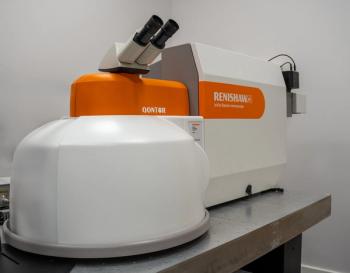
Raman Spectroscopy and Machine Learning Join Forces in Allergen Therapeutics Quality Control
A new study highlights the potential of Raman spectroscopy for distinguishing between bee and wasp venom-based therapies from different manufacturers.
Spectroscopy is continuing to be used in the biopharmaceutical industry. A recent study published in the journal Chemometrics and Intelligent Laboratory Systems highlights how Raman spectroscopy can be used potentially to differentiate allergen therapeutic products (1). This study was led by Christel Kamp, a researcher from Goethe University and the Paul-Ehrlich-Institut in Germany, and Kamp’s team included researchers from various German institutions, including Georg-August-University and Saarland University.
Biomedicines are drugs produced in living organisms (2). These therapeutics are used to target specific chronic illnesses, such as autoimmune diseases, allergies, and Alzheimer’s disease (2). However, before these medicines can be distributed to patients, drug developers, for liability and ethical reasons, need to ensure that these treatments are safe for use.
Raman spectroscopy is a light scattering technique that yields chemical information of samples (3). This technique is widely recognized for its ability to provide molecular fingerprints of chemical substances (1,3). This non-destructive method has already found substantial applications in the quality control of small-molecule pharmaceuticals (1). However, applying it to complex biological products such as vaccines or allergen immunotherapies presents a set of unique challenges (1).
This study explored how Raman spectroscopy can distinguish allergen products. For this study, Kamp and the team attempted to determine whether Raman spectroscopy can reliably differentiate between two allergen products produced by different manufacturers. These products contain either bee or wasp venom as their active pharmaceutical ingredient (API), which are used in desensitization treatments for patients with severe insect venom allergies (1).
The researchers decided to improve the utility of their Raman spectroscopy method by integrating machine learning (ML) algorithms. Using ML techniques allowed the research team to identify significant differences in the spectral signatures of the products. Their models achieved classification accuracies above 95%, indicating that the method could reliably determine both the manufacturer and the type of venom used (1). A sliding window approach was employed to pinpoint specific wavenumber regions in the spectra that contributed most to accurate classification, highlighting areas of interest for future biochemical analysis (1).
One of the important findings of the study was the spectral variations between the two products. By using Raman spectroscopy and ML, the researchers determined that Manufacturer B’s product had greater spectral variation between bee and wasp venom-based therapies than those from Manufacturer A (1). The researchers suggested in their study that this might be attributed to differences in venom harvesting techniques or manufacturing processes (1).
Although this insight is valuable for the design of experimental protocols for future studies in this space, the research team acknowledged other limitations that need to be addressed. The first is that more research needs to be conducted on other variables that affect spectral outcomes, which include sample preparation, environmental conditions, and instrument calibration (1).
Additionally, the researchers call for the development of a larger, more diverse spectral database, including calibration samples with pure venoms or isolated antigenic proteins (1). Such data would enable more detailed quantitative predictions and enhance the method’s reliability across different production batches and manufacturers (1).
However, this study advances research done in biopharmaceutical analysis. The research team demonstrated that spectroscopic and ML methods should continue to be adopted in biopharmaceutical quality control. By offering a fast, non-invasive, and accurate alternative to traditional testing methods, Raman spectroscopy could help ensure the safety and efficacy of allergen immunotherapies, ultimately improving patient outcomes (1).
As Kamp and the team continue their work, future investigations will focus on identifying sources of spectral variance, refining experimental protocols, and expanding applications to other biologics, which means Raman spectroscopy will have a place in helping to ensure the quality of immunotherapies.
References
- Ickes, C.; Rani, P.; Tsenova, K.; et al. Identification of Therapeutic Allergen Products Using Their Raman Spectral Fingerprint. Chemom. Int. Lab. Sys. 2025, 260, 105340. DOI:
10.1016/j.chemolab.2025.105340 - Samsung Biologics, A New Era in Biotechnology: What are Biomedicines? Samsung Biologics. Available at:
https://samsungbiologics.com/media/bio-story-view?boardSeq=1117 (accessed 2025-04-07). - Horiba, What Is Raman Spectroscopy? Horiba.com. Available at:
https://www.horiba.com/usa/scientific/technologies/raman-imaging-and-spectroscopy/raman-spectroscopy/ (accessed 2025-04-07).
Newsletter
Get essential updates on the latest spectroscopy technologies, regulatory standards, and best practices—subscribe today to Spectroscopy.



